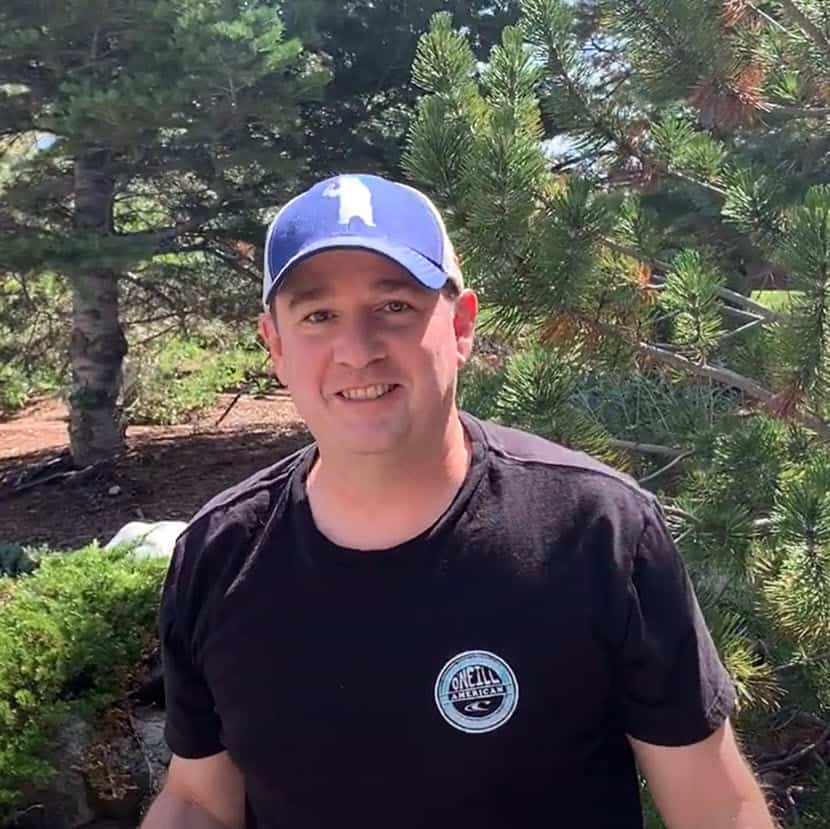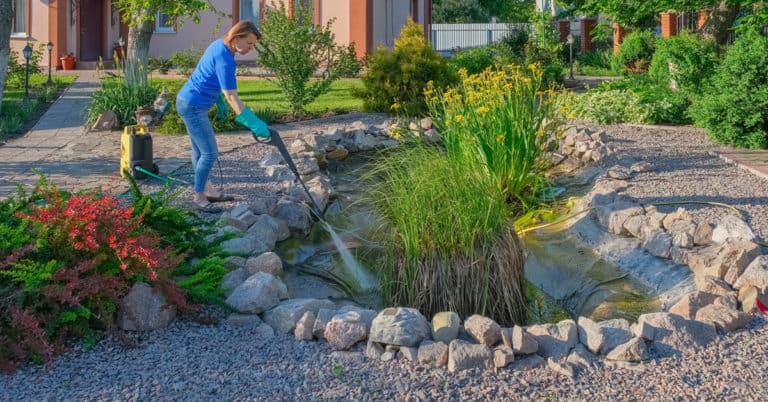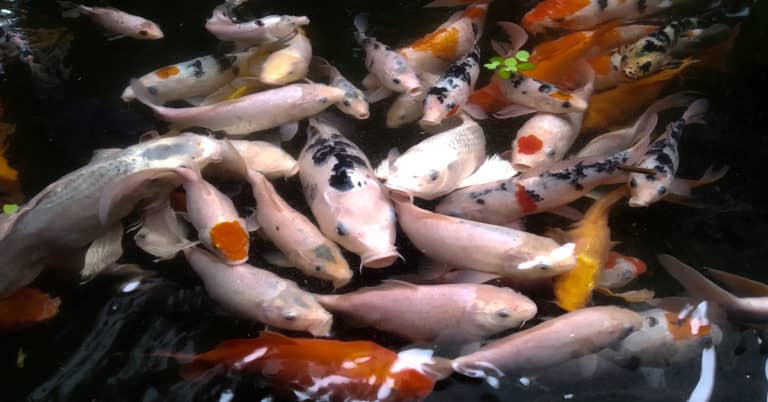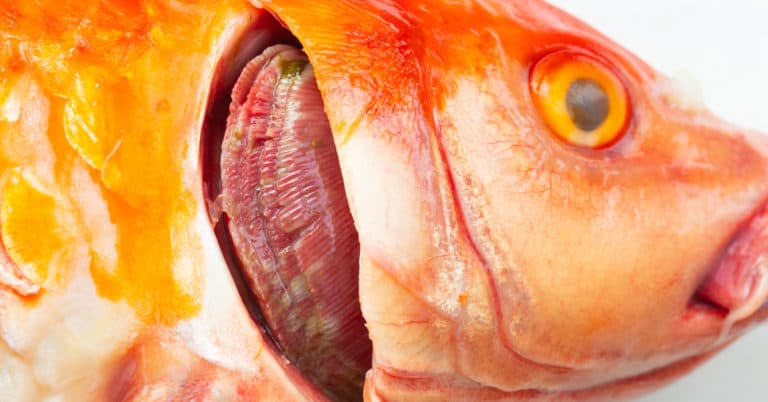Before you set up your koi pond, it is good to know how to take care of it when colder weather arrives.
You might wonder whether it is okay for the pond water to freeze and what you can do to help your koi fish through the winter. Is it better to place a single air stone close to the surface and call it a day? When might you need more advanced aeration or warming methods for your pond?
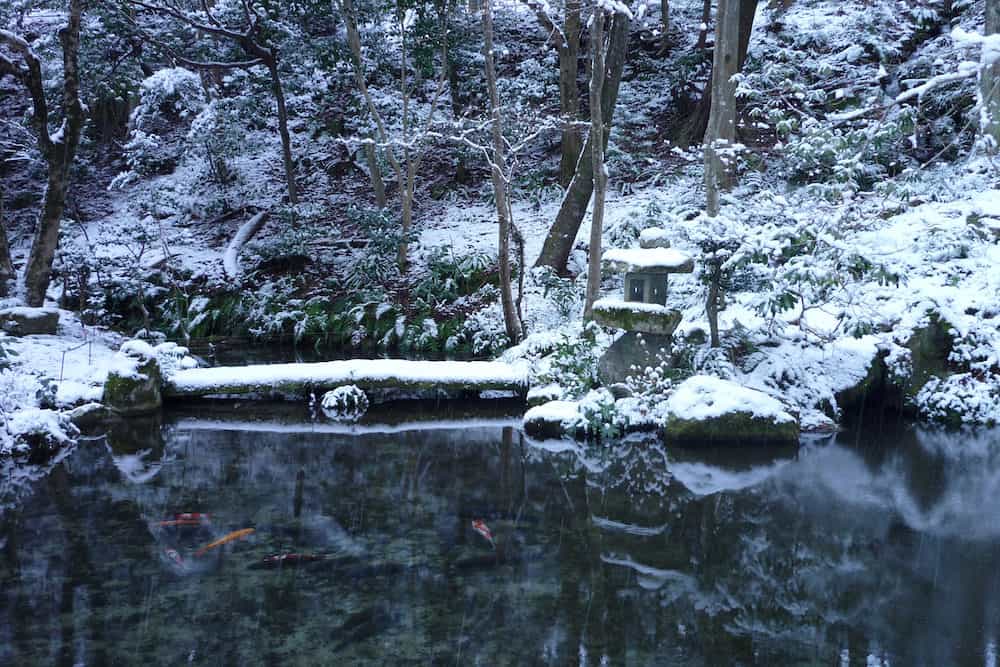
We will answer those questions and more down below about koi pond spring maintenance and general pond cleaning.
Koi are resilient enough to survive in cold winter water, but they will not survive in completely frozen water.
On the other hand, it is okay if your pond only accumulates a thin layer of ice on top. This ice acts as an insulator for heat, so it may help your koi fish stay comfortably warm.
The most important thing in pond maintenance is making sure that your water stays oxygenated throughout the winter. If you choose to keep your koi in their pond, you may have to let your pond pump run throughout the winter.
The answer to this question may seem obvious, but it is not as simple as "your koi need oxygen to thrive."
The plants around and at the bottom of your koi pond need oxygen too. Those plants give off the oxygen of their own for the koi to use. Plus, when your koi have fresh oxygen, beneficial bacteria can thrive in the water.
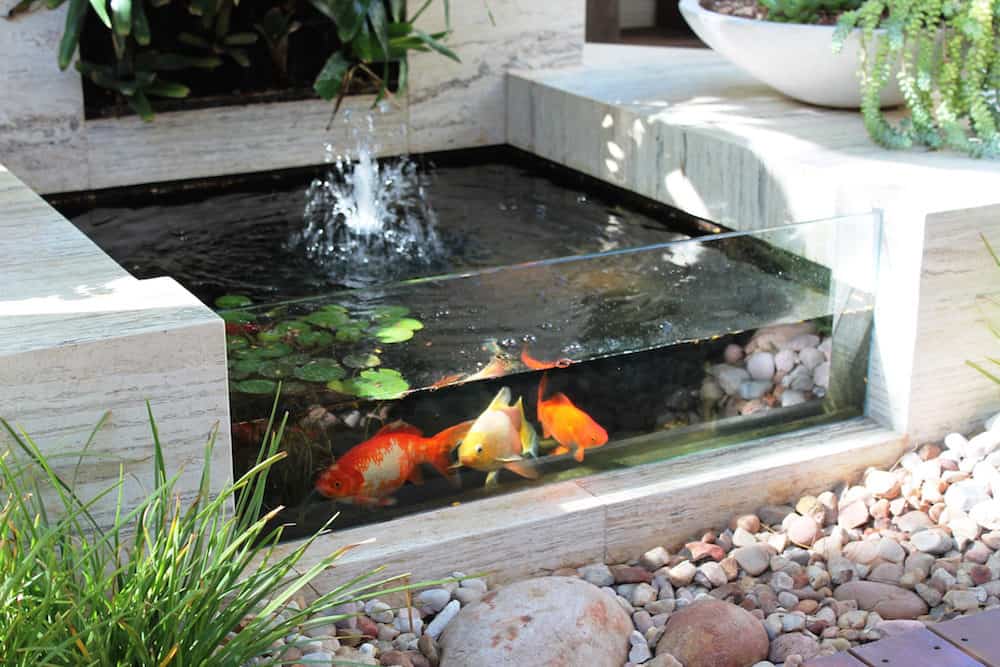
Keep in mind that the more koi you have, the more oxygen you will need to create. For some, that might mean using a simple waterfall. Others may require a waterfall, a diffuser, air pumps, and other tools. You want to generate enough oxygen for all the life in your pond but still have a little extra.
Water temperature is a critical factor in oxygen creation. The colder the water, the less dissolved oxygen it carries. This may not sound right since we think koi fish need more oxygen in winter.
In actuality, koi metabolism is slowest in winter, so they do not require as much oxygen as they do in summer or spring. While you still need to watch how much oxygen you provide for your koi fish, keeping baseline oxygen production should be fine for winter.
There are a few ways to provide oxygen to your koi. Most people aerate their koi pond with a water feature, such as a waterfall, creating great water movement in more shallow ponds. However, you cannot guarantee that that will work in the winter, so keep other aeration methods in mind.
Air stones keep bubbles and the water itself moving. In the spring and summer, you usually place them at the bottom of the pond, where they lift less oxygenated water toward the surface to receive more oxygen.
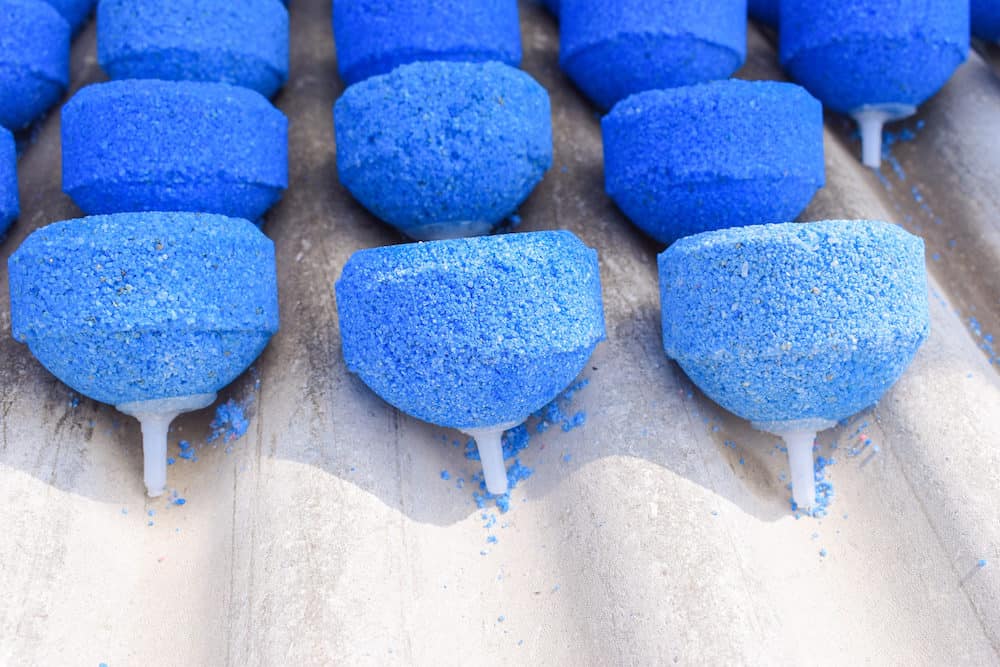
In winter, however, it might be better to place them closer to the surface. The constant circulation of bubbles will help keep the water above the stone from freezing, therefore allowing more oxygen into the water.
No matter where you place the air stone, you will get a more even water temperature, rather than random warm and cold spots.
For smaller ponds, you will only need one air stone.
One of the best ways to aerate your pond is to wholly circulate the water with a bottom drain.
While a waterfall might work fine for a shallower pond, it is best to get water moving from the pond's bottom toward the top. Remember that the bottom of a pond carries less oxygen than the top, so moving the less oxygenated water to the top keeps the oxygen levels even and consistent.
Depending on the size of your pond, you may need more than one bottom drain.
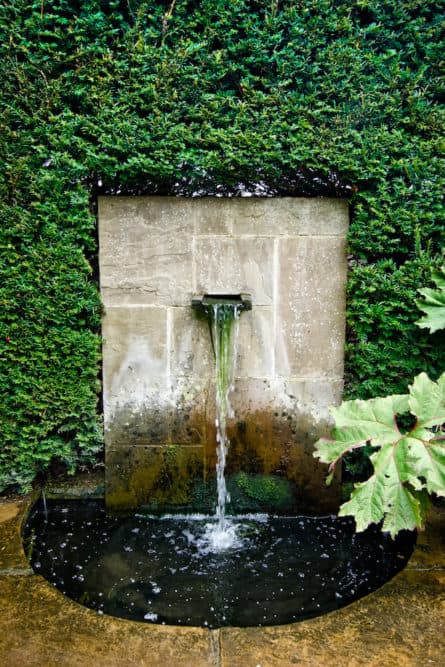
Beneficial bacteria come in handy when there are too many algae in your pond. That comes about when too many nutrients, such as phosphorus and nitrogen are in the water.
In a nutshell, it helps to break down organic matter in the water, helping to prevent parasites and diseases from rotting in the pond. Aerobic bacteria work quickly alongside water circulation to break down waste, while anaerobic bacteria (which thrive with little water circulation) break down waste much more slowly.
Some garden companies make beneficial bacteria that you can add to your pond. However, beneficial bacteria can grow on its own, thanks to organic matter building up in the water.
Some people are wary of using manufactured beneficial bacteria, because it is always a shot in the dark about whether it will actually work. You never know if the purchased beneficial pond bacteria is actually alive (which it needs to be to work), or if the bacteria will match with your pond's pH level, temperature, microbes, and so on.
It is probably better to have a large surface area for bacteria to grow on, such as a lining of rocks. Plus, you need the right environment for it to grow and thrive, so simply adding more is not going to help your aeration.
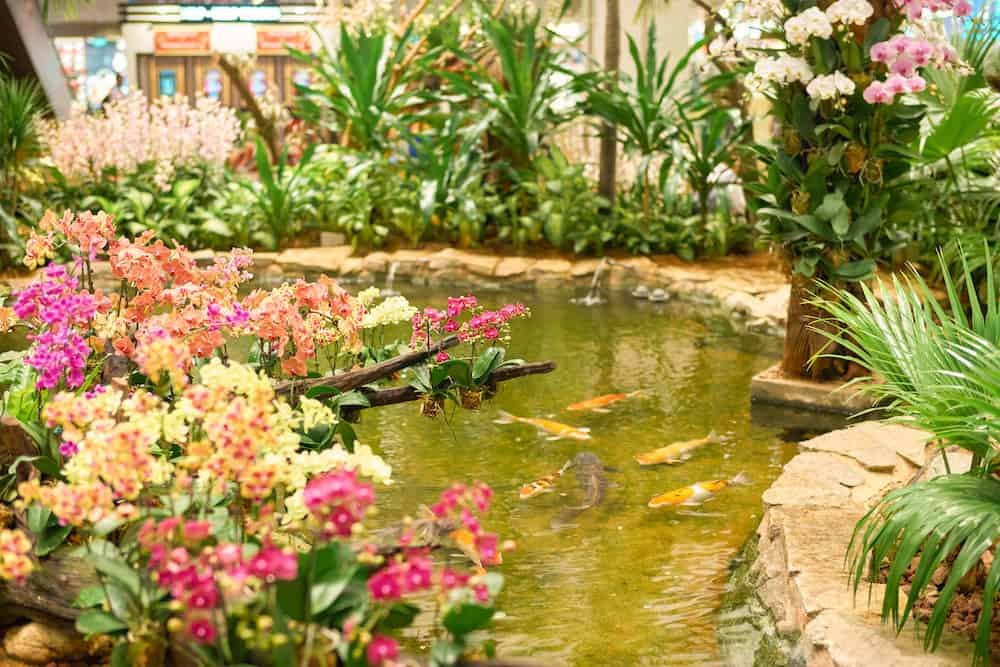
Plants naturally release oxygen into the water while absorbing carbon dioxide. A rule of thumb is to add one bunch of oxygenating plants for every 2 to 3 square feet of surface area.
The only downside is that they only produce oxygen when undergoing photosynthesis. In other words, they can only slightly aerate your pond during daylight hours when the sun is out.
We have discussed how to provide oxygen to your koi during the winter, but how can you protect your aeration equipment?
If you run an external pond pump, keep a tarp on hand. If the temperature drops too low, your pond pump could freeze, so the tarp will protect it from snow and keep it warm. Be sure to leave part of the tarp open (such as a corner) so the equipment can get fresh air on warmer days.
You can also place a protective net over the water so any extra debris cannot fall into the water.
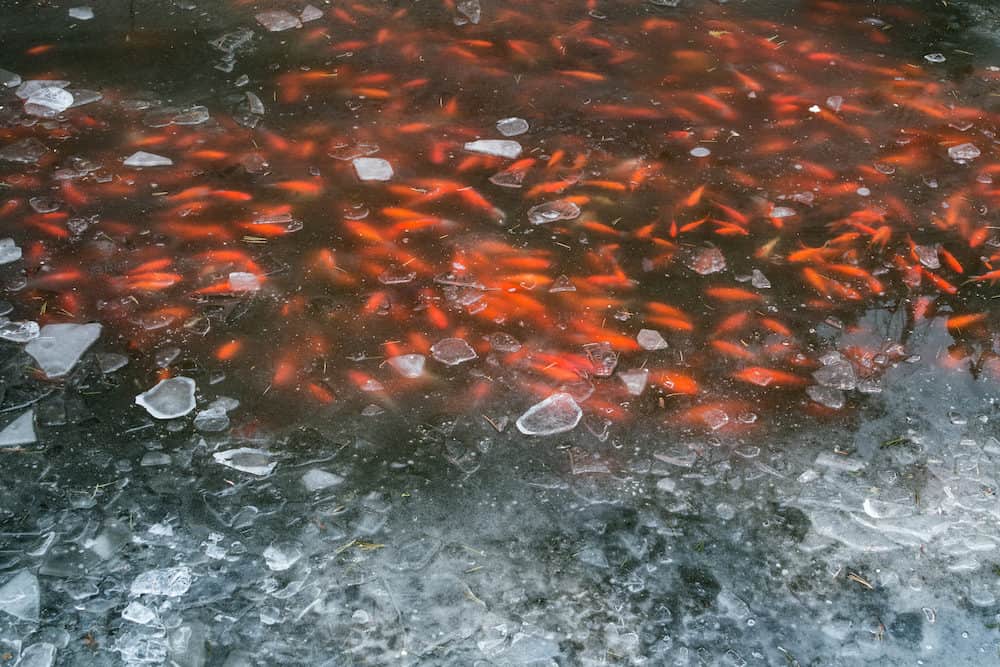
Although you have done everything you can to prepare your koi for winter, you can still follow a few tips for koi pond spring maintenance.
